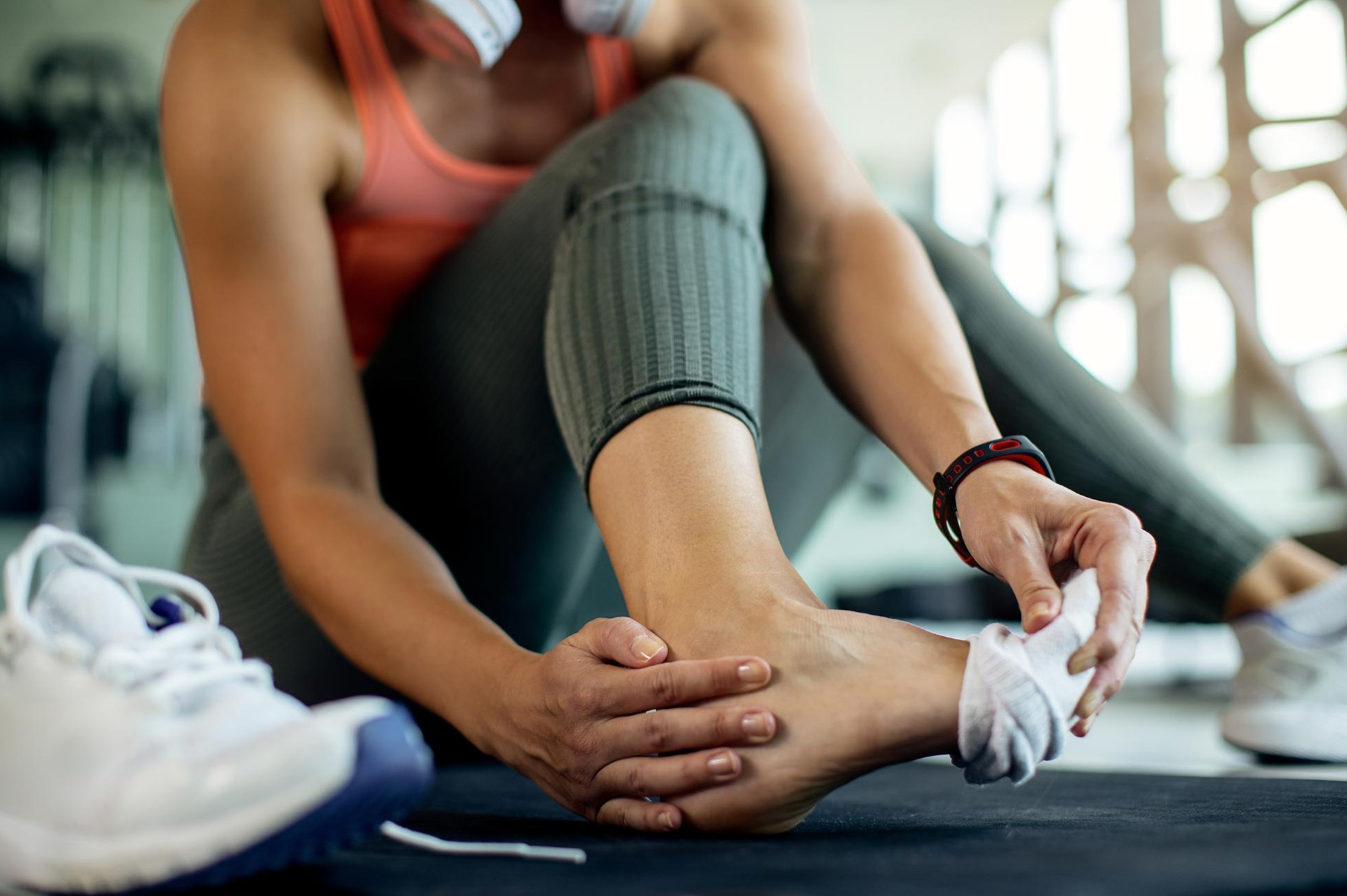Connective tissues, the networks of membranes that connect, support, and bond different tissues, usually go unnoticed in our daily lives. They have many important functions including support for organs, moving nutrients throughout the body, helping remove waste, and playing a key role in repairing injured tissues. These tissues are diverse, encompassing tendons, ligaments, cartilage, lymphatic tissue, and even blood.
It’s often not until one of these critical tissues is damaged or starts breaking down that we appreciate their importance and the critical roles they play in our body’s overall health and functionality.
What is connective tissue
Connective tissues come in two primary forms: connective tissue proper and specialized connective tissue. Tissue proper is subdivided into dense and loose tissues. Dense tissues, including tendons, ligaments, pericardium layers (the tissue around the heart), and artery walls, are characterized by their tightly packed fibers. These fibers vary in shape— regular, irregular, or elastic — based on their location and role in the body. In contrast, loose connective tissues, featuring areolar tissue and a spacious extracellular matrix, play a key role in anchoring organs and maintaining structural integrity.
Specialized connective tissues, on the other hand, are distinct due to their diverse mix of cells, tissues, and unique substances, leading to a variety of functions. This category includes fat tissue, cartilage, bone, blood, and lymph, each fulfilling specific roles such as energy storage, cushioning joints, providing structural support, transporting nutrients, and maintaining fluid balance.1
Tendons and ligaments
Tendons and ligaments are crucial connective tissues for mobility and movement. While similar in structure, they differ in function with tendons linking muscles to bones, while ligaments join bones to each other. These tissues are frequently injured in athletic and active people, experiencing strains, sprains, and more severely tears. Due to their dense structure and lack of blood vessels, healing can be slow and challenging. Over time, repetitive injuries, overuse, and aging can lead to chronic conditions like osteoarthritis and pain.
As we age, tendons and ligaments tend to become stiffer and less flexible. A common example in adults over 60 is issues with the rotator cuff tendons and glenohumeral ligaments in the shoulder joint.2 This age-related stiffening is partly due to decreased body fluids, leading to reduced mobility in older adults.
Typical treatments for tendon and ligament injuries include rest, ice, bracing, elevation, and anti-inflammatory medications. However, severe injuries like tears often require surgical repair. Given these challenges in healing, researchers and medical professionals are exploring more effective treatment alternatives, such as utilizing stem cells. Among these, mesenchymal stem cells (MSCs) are particularly promising due to their ability to transform into various cell types, aiding in the repair and replacement of damaged tissue.
What are MSCs
Stem cells are like the blueprint to other cells in our bodies. They are undifferentiated, meaning that they are not yet a specific type of cell so have potential to become any cell it attaches to. This is what makes their healing potential so great.
Mesenchymal stem cells (MSCs) specifically, stand out as a powerful tool in regenerative medicine due to their abilities to restore and repair cells. They are categorized as “multipotent” so they can transform into different cell types including bone, cartilage, and fat cells. They are also able to maintain and replenish their populations over time due to their unique self-renewal properties.3
There are three main sources of MSCs —bone marrow, umbilical cord blood, and adipose (fat) tissue. Of these, umbilical cord MSCs (UC-MSCs) seem to be the most beneficial. They can multiply faster than other MSCs and are critical in tissue repair with their ability to differentiate into the three primary cell layers.4
Other advantages to UC-MSCs are their non-invasive collection, lower risk of creating infection, have low risk of forming tumors, and are less likely to trigger an immune response.5 These factors make them a promising treatment for many clinical applications.
The role of UC-MSCs in repairing tendons
Due to their adaptable nature, UC-MSCs are showing exciting therapeutic potential for tendon and ligament regeneration. When compared with bone marrow (BM-MSCs) and umbilical cord blood (UB-MSCs) stem cells, UC-MSCs have shown superior efficacy in regenerating tendon-like tissues. In animal studies, these cells not only enhanced tendon repair but also effectively replaced damaged tissue, with a reduced tendency to form unwanted tissues such as cartilage or bone, a common issue with other MSC types.6
In the context of knee injuries, MSC’s are beneficial in repairing the medial collateral ligament (MCL), which is a critical component for knee stability. MCL injury is a major cause of athletic injury and with current treatments can take a long time to heal. UC-MSC’s work in ligament recovery by transforming into fibroblast-like cells, creating new blood cells, and improving tissue characteristics leading to ligament recovery. When combined with MCL stem cells, UC-MSCs demonstrated significantly better healing and outcomes, then MCL cells alone, underscoring their therapeutic advantage.7
In a comparison study using an animal model of rotator cuff tears, groups giving UC-MSC injections into the shoulder joint had significantly reduced tear size compared to control groups. UC-MSC showed improved collagen fiber regeneration, new blood vessels, and regenerated tendons as well as improved movement distance and speed.8
Furthermore, a comparison study using an animal model for rotator cuff tears, UC-MSC injections into the shoulder joint lead to significantly smaller tear sizes compared to control groups. The results highlighted UC-MSCs’ ability to enhance collagen fiber regeneration, promote the creation of new blood vessels, and regenerate tendons. Treatment also lead to improved movements including being able to more further and faster.8
The Takeaway
When addressing injuries from sports, strain, or aging, the search for effective treatments for tendon and ligament damage is crucial. The therapeutic potential of UC-MSCs is particularly promising due to their unique regenerative properties. These cells not only enhance surgical recovery but also show potential as a standalone therapy for repairing tissue damage. These qualities could revolutionize treatment approaches, offering more efficient, effective, and potentially less invasive options for managing and treating connective tissue injuries.
Resources
- Kamrani, P., Marston, G., Arbor, T. C., & Jan, A. (2024). Anatomy, Connective Tissue. In StatPearls. StatPearls Publishing. http://www.ncbi.nlm.nih.gov/books/NBK538534/
- Asahara, H., Inui, M., & Lotz, M. K. (2017). Tendons and Ligaments: Connecting Developmental Biology to Musculoskeletal Disease Pathogenesis. Journal of bone and mineral research : the official journal of the American Society for Bone and Mineral Research, 32(9), 1773–1782. https://doi.org/10.1002/jbmr.3199
- Li, Z., Hu, X., & Zhong, J. F. (2019). Mesenchymal Stem Cells: Characteristics, Function, and Application. Stem cells international, 2019, 8106818. https://doi.org/10.1155/2019/8106818
- Nishimura, T., Yamaguchi, S., Yoshimura, K., Rubinstein, P., & Takahashi, T. A. (2011). Isolation and characterization of mesenchymal stem cells from human umbilical cord blood: reevaluation of critical factors for successful isolation and high ability to proliferate and differentiate to chondrocytes as compared to mesenchymal stem cells from bone marrow and adipose tissue. Journal of cellular biochemistry, 112(4), 1206–1218. https://doi.org/10.1002/jcb.23042
- Nagamura-Inoue, T., & He, H. (2014). Umbilical cord-derived mesenchymal stem cells: Their advantages and potential clinical utility. World journal of stem cells, 6(2), 195–202. https://doi.org/10.4252/wjsc.v6.i2.195
- Yea, J. H., Kim, Y., & Jo, C. H. (2023). Comparison of mesenchymal stem cells from bone marrow, umbilical cord blood, and umbilical cord tissue in regeneration of a full-thickness tendon defect in vitro and in vivo. Biochemistry and biophysics reports, 34, 101486. https://doi.org/10.1016/j.bbrep.2023.101486
- Lee, C. S., Jeon, O. H., Han, S. B., & Jang, K. M. (2023). Mesenchymal Stem Cells for Enhanced Healing of the Medial Collateral Ligament of the Knee Joint. Medicina, 59(4), 725. https://doi.org/10.3390/medicina59040725
- Kwon, D. R., Park, G. Y., & Lee, S. C. (2018). Treatment of full-thickness rotator cuff tendon tear using umbilical cord blood-derived mesenchymal stem cells and polydeoxyribonucleotides in a rabbit model. Stem Cells International, 2018. https://doi.org/10.1155/2018/7146384




